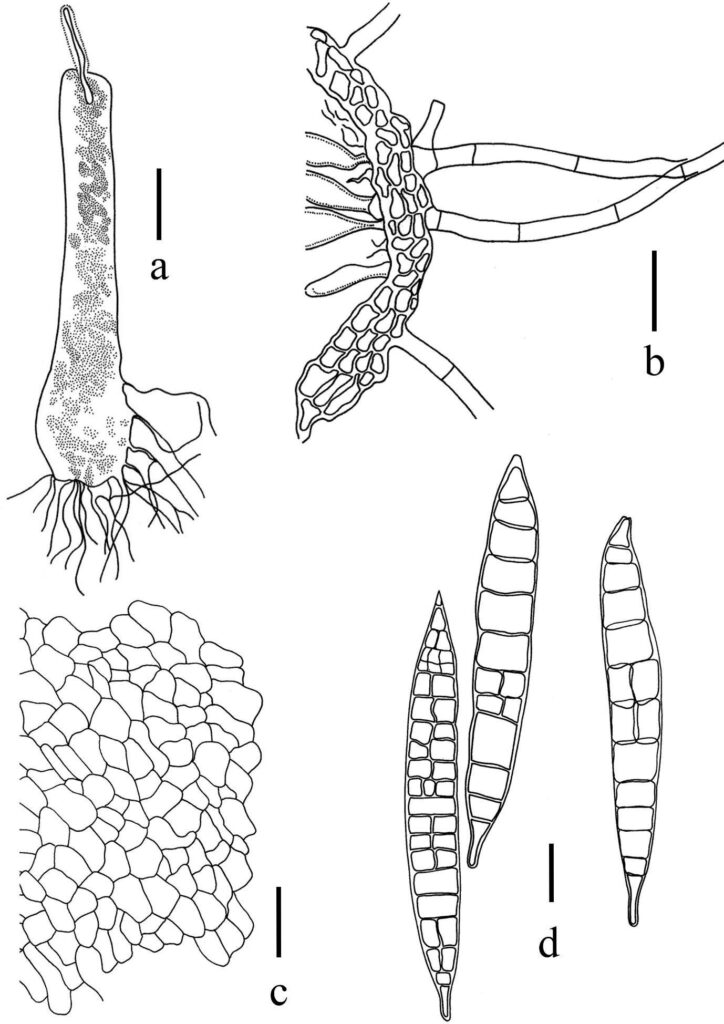Fungalpedia – Note 88 Megacoelomyces
Megacoelomyces Dianese, Guterres, M.D.M. Santos & G.F. Sepúlveda
Citation when using this entry: Pem et al., in prep – Genera of Dothideomycetes Mycosphere.
Index Fungorum, Facesoffungi, MycoBank, GenBank, Fig 1.
Dos Santos et al. (2020) introduced Megacoelomyces to accommodate M. sanchezi based on morphology and analysis of combined ITS and LSU sequence data. Megacoelomyces sanchezi was collected on trichomes of living leaves of Myrcia fenzliana (Myrtaceae) in Brazil (Dos Santos et al. 2020). Megacoelomyces is known only from its asexual state, and is characterized by large, superficial, barely setose pycnidial conidiomata situated on a loose, trichome-associated subiculum. Megacoelomyces resembles Callistospora (Ascomycota incertae sedis), Orphanocoela (Pezizomycotina incertae sedis) and Urohendersoniella (Pezizomycotina incertae sedis) in having pycnidial, dematiaceous coelomyceteous morph with appendiculate, phragmosporous, or distoseptate conidia, but phylogenetic evidence obtained from analysis of ITS and LSU sequence data show it as a distinct lineage (Dos Santos et al. 2020). Megacoelomyces is a well-supported epiphytic genus in Phaeosphaeriaceae based on morphology and phylogenetic evidence.
Type species: Megacoelomyces sancheziae Dianese, Guterres, M.D.M. Santos & G.F. Sepúlveda
Figure 1 – Megacoelomyces sancheziae (UB Mycol. Col. 24030, holotype; re-drawn from Fig. 2 and 3 in Dos Santos et al. 2020). a Conidioma with a conidium at the ostiole and mycelial projections forming a loose subiculum at the base. b Section through the base of a conidioma. c Conidiomatal wall cells of textura angularis. d Conidia. Scale bars: a = 100 µm, b, d = 20 µm, c = 30 µm.
Reference
Dos Santos MDDM, Guterres DC, Sepúlveda-Chavera GF, Souza ESDC et al. 2020 – New genus of trichomatous coelomycete on Myrcia fenzliana from the Brazilian Cerrado. Mycologia 113, 231–244.
Entry by
Pem D Center of Excellence in Fungal Research, Mae Fah Luang University, Chiang Rai 57100, Thailand.
(Edited by Kevin D. Hyde)
Published online 18 September 2023
